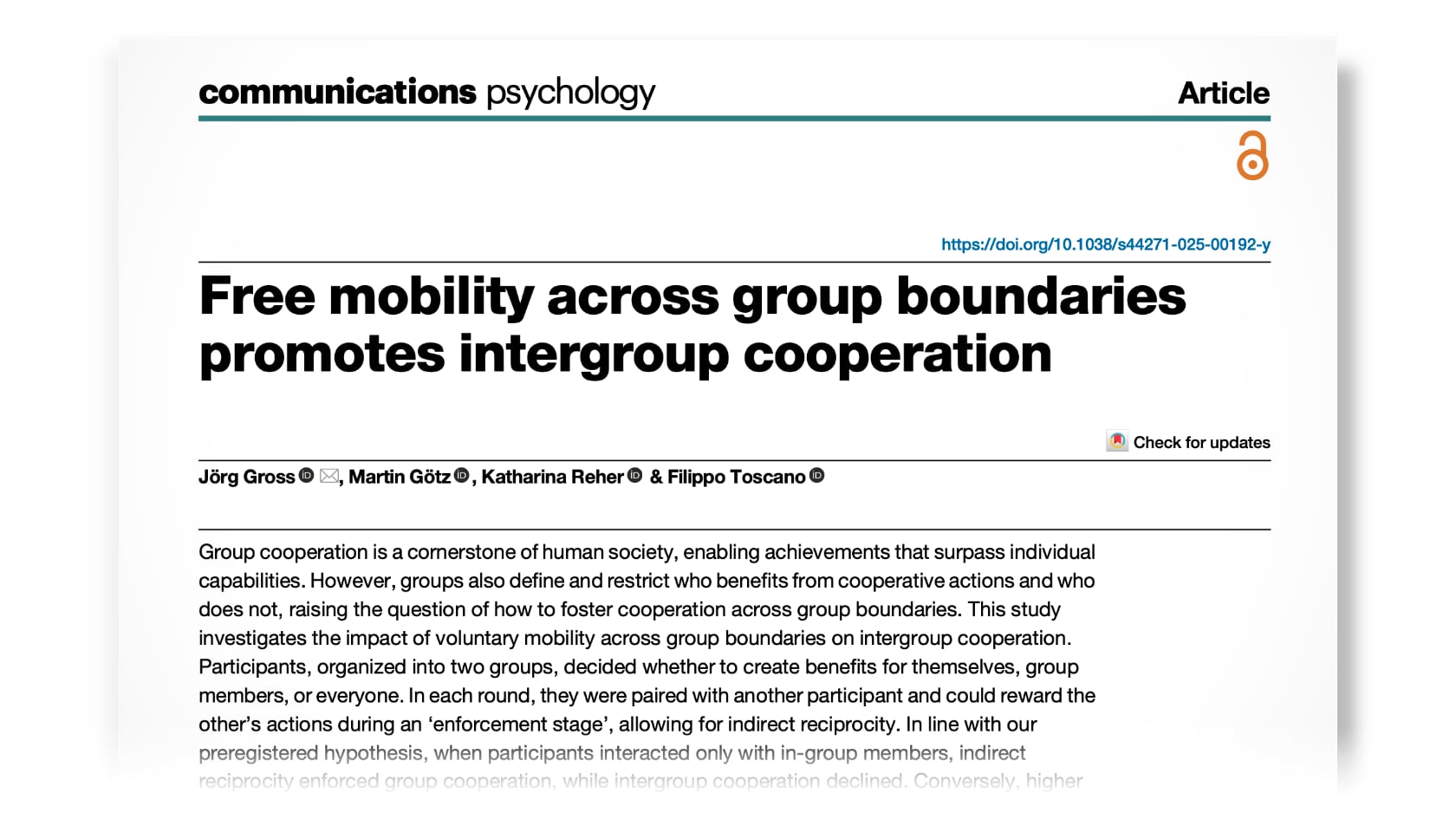New publication: "Free mobility across group boundaries promotes intergroup cooperation"
New paper published in Communications Psychology.

Abstract: Group cooperation is a cornerstone of human society, enabling achievements that surpass individual capabilities. However, groups also define and restrict who benefits from cooperative actions and who does not, raising the question of how to foster cooperation across group boundaries. This study investigates the impact of voluntary mobility across group boundaries on intergroup cooperation. Participants, organized into two groups, decided whether to create benefits for themselves, group members, or everyone. In each round, they were paired with another participant and could reward the other’s actions during an ‘enforcement stage’, allowing for indirect reciprocity. In line with our preregistered hypothesis, when participants interacted only with in-group members, indirect reciprocity enforced group cooperation, while intergroup cooperation declined. Conversely, higher intergroup cooperation emerged when participants were forced to interact solely with out-group members. Crucially, in the free-mobility treatment – where participants could choose whether to meet an in-group or an out-group member in the enforcement stage – intergroup cooperation was significantly higher than when participants were forced to interact only with in-group members, even though most participants endogenously chose to interact with in-group members. A few ‘mobile individuals’ were sufficient to enforce intergroup cooperation by selectively choosing out-group members, enabling indirect reciprocity to transcend group boundaries. These findings highlight the importance of free intergroup mobility for overcoming the limitations of group cooperation.
Reference: Gross, J., Götz, M., Reher, K., & Toscano, F. (2025). Free mobility across group boundaries promotes intergroup cooperation. Communications Psychology, 3(1), 10.